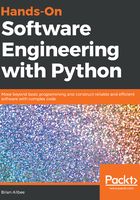
Architecture, both logical and physical
The goal of both logical and physical architecture specifications is to define and document the logical and physical components of a system, respectively, in order to provide clarity around how those component elements relate to one another. The artifacts resulting from either effort could be text documentation, or diagrams, and both have their own advantages and drawbacks.
Text documentation is usually quicker to produce, but unless there is some sort of architectural documentation standard that can be applied, the formats can (and probably will) vary from one system team to another, at a minimum. That sort of variance can make it difficult for the resulting artifacts to be understandable outside the team that it originated with. If there is not a lot of movement of developers between teams, or a significant influx of new developers to teams, that may not be a significant concern. It can also be difficult to ensure that all of the moving parts or the connections between them are fully accounted for.
The primary advantage to diagrams is the relative ease with which they can be understood. If the diagram has obvious indicators, or symbols that unambiguously indicate, for example, that one component is a database service and another is an application, then the difference between them becomes obvious at a glance. Diagrams also have the advantage of being more easily understandable to non-technical audiences.
In both cases, text-based or diagram-based documents are, obviously, most useful if they are well-constructed, and provide an accurate view or model of the system.